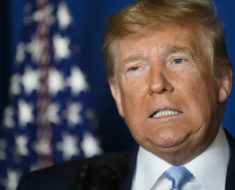
In an era marked by the proliferation of misinformation, social media platforms have been grappling with the challenge of curbing the spread of false narratives, particularly during election periods. YouTube, one of the largest video-sharing platforms, has taken significant steps to combat election misinformation and promote the integrity of democratic processes. By implementing a range of measures, YouTube aims to provide accurate information, limit the reach of misleading content, and ensure that users have access to reliable sources during critical election periods.
1. Strengthening Policies and Enforcement:
YouTube has fortified its policies to address election misinformation. It explicitly prohibits content that spreads false information about voting procedures, election results, and candidates. The platform actively enforces these policies by removing or limiting the visibility of such content. YouTube’s efforts align with the company’s commitment to preventing the manipulation of its platform for political gain.
2. Promoting Authoritative Sources:
To provide users with accurate and reliable information, YouTube has emphasized the promotion of authoritative sources. During elections, the platform highlights content from trustworthy news organizations and official government channels in search results and recommendations. This proactive approach aims to counterbalance the spread of misleading or deceptive content and provide users with access to verified sources.
3. Collaborating with Fact-Checkers:
YouTube collaborates with independent fact-checking organizations to verify the accuracy of content. When misinformation is identified, YouTube takes action by appending fact-check information panels alongside the relevant videos. These panels provide viewers with additional context, counterarguments, and links to authoritative sources. This collaborative approach helps users make more informed decisions and promotes a more balanced information ecosystem.
4. Improving Algorithmic Recommendations:
YouTube continuously works to refine its recommendation algorithms to prioritize accurate and reliable content. The platform aims to reduce the amplification of misinformation and limit the potential for users to be inadvertently exposed to false narratives. By promoting credible sources and fact-checked content, YouTube strives to provide users with a more trustworthy and informative experience.
5. Educating Users and Raising Awareness:
YouTube recognizes the importance of user education in combating election misinformation. The platform has launched initiatives to educate users on media literacy, critical thinking, and how to identify and report misleading content. By raising awareness about the risks of election misinformation and empowering users with the necessary tools to navigate the digital landscape responsibly, YouTube contributes to fostering a more informed electorate.
Conclusion:
In the battle against election misinformation, YouTube has implemented a range of measures to safeguard the integrity of democratic processes. By strengthening policies, promoting authoritative sources, collaborating with fact-checkers, improving algorithms, and educating users, YouTube is actively combating the spread of false narratives during critical election periods. While challenges persist, YouTube’s commitment to fighting election misinformation underscores the platform’s dedication to preserving the trust, transparency, and reliability of information on its platform, ultimately contributing to the protection of democratic ideals.
Dil Bole Oberoi





